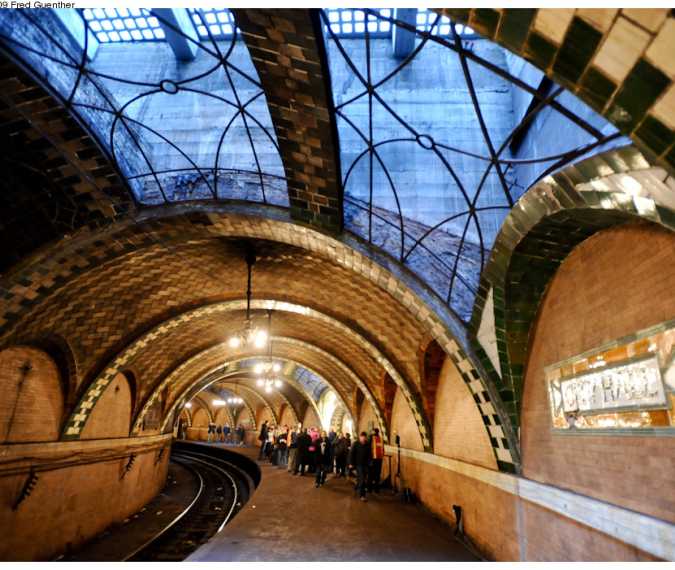
Abandoned City Hall Station from 1904 In NYC Subway
In the annals of history, the first subway system of New York City—conceived, designed, and operationalized by the Interborough Rapid Transit Company (IRT)—stands as a towering achievement of early twentieth-century urban engineering. Opening its subterranean iron gates on October 27, 1904, it served as a beacon of progress, captivating the hitherto streetcar- and elevated train-dependent residents of New York.
A gem within this labyrinthian network was the City Hall station. Nestled on the local track of the IRT, it was swathed in architectural magnificence. Illuminated by the glow of grand chandeliers, the station boasted a splendid assemblage of glass tiles. Its crowning glory, however, lay above in the form of Gustavino vaulted ceilings punctuated with ethereal skylights.

Photo: commons.wikimedia.org/Rhododendrites
Paradoxically, this artistic marvel was lost on the bustling multitude of time-strapped commuters, for whom it was merely another point in their daily trajectories. Amid the constant ebb and flow of foot traffic, City Hall station languished in relative obscurity, never seeing the installation of turnstiles by 1923, a common feature of its counterparts.
On the other hand, the neighboring Brooklyn Bridge stop was a stark contrast. It was strategically located near a variety of connecting streetcars and had a frequent express train schedule, attracting many potential patrons away from City Hall station. Moreover, City Hall station faced a unique architectural challenge-a curving platform. This feature, while adding a layer of complexity, also significantly impacted the station's operation. The curvature of the platform made it impossible for cars with center doors to operate, unless they were equipped with a custom door control system that allowed only the end doors to open.

Photo: flickr.com/Joe Wolf
1945 witnessed a significant shift in the city's transit landscape. The ambitious endeavor of extending platforms to accommodate larger train contingents led to the shuttering of the City Hall station, a decision facilitated by the dwindling patronage of this once-architectural marvel.
One striking aspect of this narrative of decline was the unique spatial challenge faced by passengers boarding at City Hall. Whether their destination was below City Hall or even Brooklyn, they found themselves on the uptown platform at the Brooklyn Bridge station. To continue their journey, they had to navigate up and then down again to reach the downtown platform. Often, it was more practical to walk the short distance to the Brooklyn Bridge station at street level, highlighting the inconvenience faced by these passengers.

Photo: flickr.com/Elizabeth K. Joseph
Fast forward to the tail-end of the 20th century—passengers aboard the Lexington Avenue Local, known in contemporary parlance as the Six trains, were mandated to disembark at the Brooklyn Bridge stop. However, this practice transformed. The reinstatement of the skylights and the rekindling of the station lights sparked a resurrection of sorts for the City Hall station. Despite the inability to disembark and immerse in the station's rejuvenated ambiance as yesteryears' commuters might have, modern passengers have the opportunity to remain onboard, witnessing the station as the train gracefully loops around its tracks, en route to its northern trajectory.


